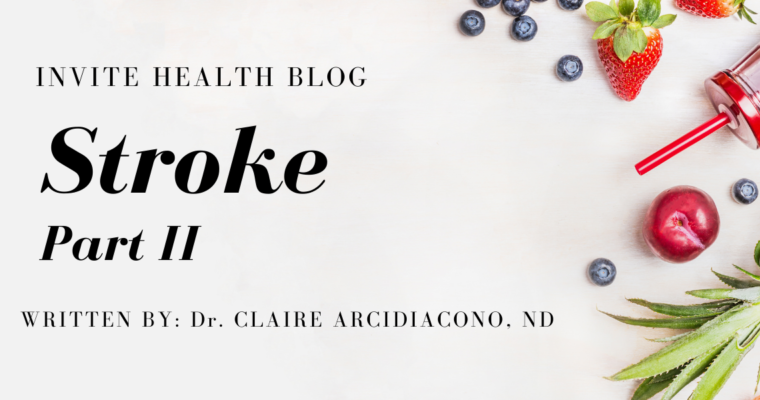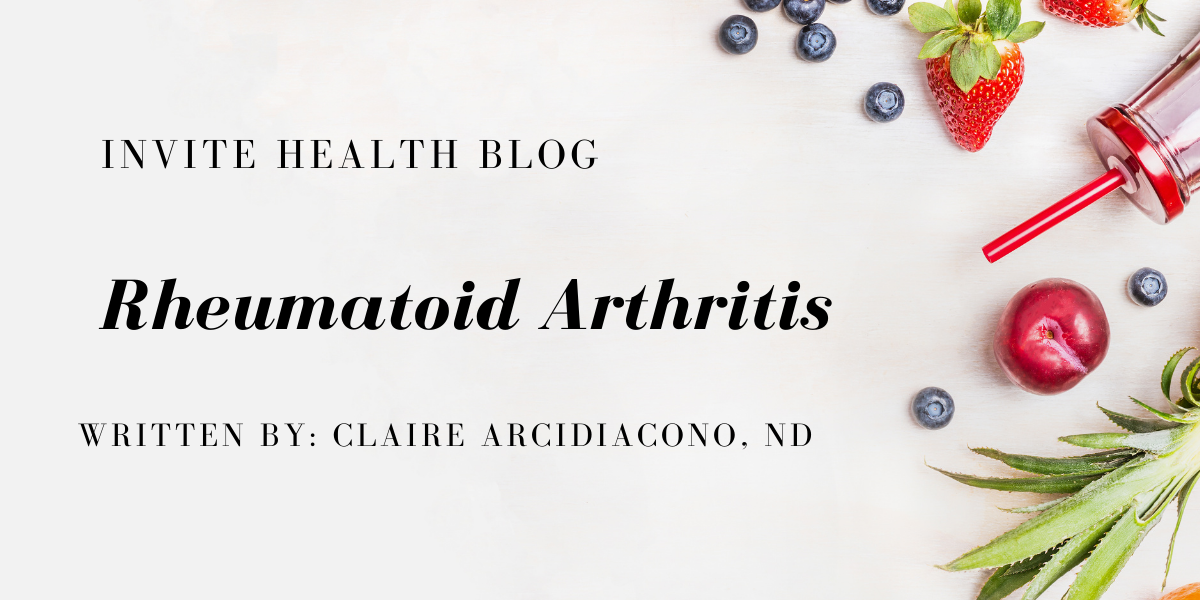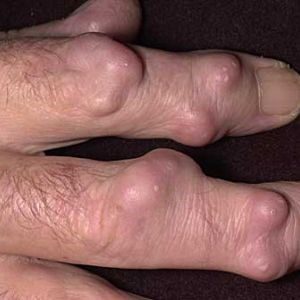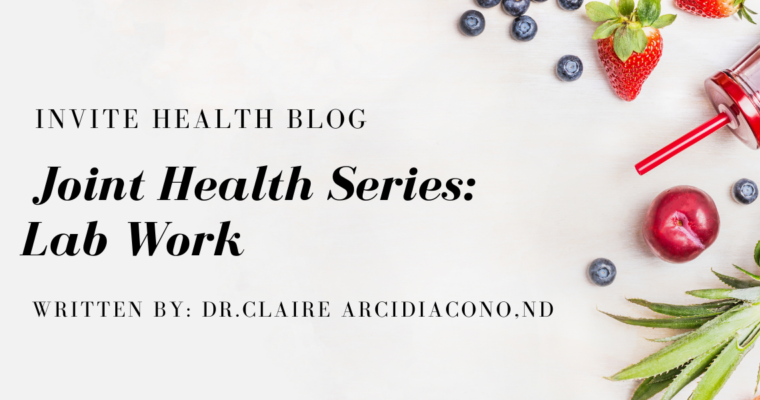arthritis
Subscribe Today!
Please see below for a complete transcript of this episode.
Green Tea Targets Arthritis – InViteⓇ Health Podcast, Episode 512
Hosted by Amanda Williams, MPH
*Intro music*
InViteⓇ Health Podcast Intro: Welcome to the InViteⓇ Health Podcast, where our degreed healthcare professionals are excited to offer you the most important health and wellness information you need to make informed choices about your health. You can learn more about the products discussed in each of these episodes and all that InViteⓇ Health has to offer at www.invitehealth.com/podcast. First time customers can use promo code PODCAST at checkout for an additional 15% off your first purchase. Let’s get started!
*Intro music*
Amanda Williams, MPH:
[00:00:40] Teas have been widely consumed throughout the world, and we’ve all heard about the many potential health benefits that go along with tea. So today I want to zero in on tea and inflammation in the setting of arthritis. I’m Amanda Williams, M.D., M.P.H., and let’s get right to it. Let’s talk about the amazing amount of clinical research that is out there that is assessing the impact of the power nutrient, that power catechin coming from green tea, the EGCG and how beneficial that can be when it comes to targeting inflammation that’s directly associated with arthritis, so whether we’re looking at osteoarthritis or we are looking at rheumatoid arthritis.† [00:01:22]
[00:01:22] There was a very extensive research study that was published in the Life Science Journal back in 2010 that looked at the power of that polyphenol, that EGCG when it came to inflammation and arthritis. So being that we know that many Americans suffer from arthritic joints and arthritic conditions, this is an area that oftentimes people are looking for alternatives as opposed to using an NSAID on a daily basis, the non-steroidal anti-inflammatory drugs, because the long-term use of those in not so great, depending upon which one that you’re taking, can impact negatively different things, like acetaminophen, for example. The extended use of acetaminophen, definitely not a good thing for your liver. And then when you look at the other NSAIDs, such as ibuprofen, for example, then we have to start having concerns with the long-lasting negative impact on the kidneys.† [00:02:16]
NONPRESCRIPTION DRUGS THAT DEPLETE IMPORTANT NUTRIENTS, PART 1 – INVITE HEALTH PODCAST, EPISODE 482. Listen Now>>
[00:02:16] So that’s why I want to talk about green tea in this setting today and looking at the many benefits of how it is that green tea is really kind of guiding us through this inflammaging highway. So we… I talk oftentimes about inflammaging, which is accelerated aging brought on because of chronic inflammation. So understanding how the antioxidants that are contained within green tea can really target the inflammatory pathways in a much broader degree than we ever recognized previously. And one of the things that we now know from scientific research is that not only can that green tea help with the regulation of expression of different cytokines and chemokines and the reactive oxygen species and targeting, you know, COX-1 and COX-2 pathways. But we also now know that it targets something known as HMBG1, which is high mobility group box one. Why does that matter? Well, because when we understand the impact of HMGB1 in the body, then you can start to tie that in with the excessive amount of inflammation that can occur within the joints. So HMGB1 turns on the release of chemical signals in the body, which we call cytokines, and those cytokines generate up inflammation. So if we have this release of inflammatory cytokines, then over the course of time, so we’re talking chronic inflammation. In the acute setting, that’s one thing. You know, you stub your toe, you sprain your ankle. Acute inflammation is one thing, but we’re talking in the setting of chronic inflammation. Then we know we’ve got a big problem. So elevated HMGB1 levels have been found to be associated with many different chronic inflammatory conditions, so when we’re thinking about things such as arthritis. But we can also, you know, put into the mix different respiratory chronic conditions such as asthma, COPD, for example, we can look at inflammatory bowel disease, we can look at diabetes, for example, and many different conditions, even within the cardiovascular system, where you can see this elevation of HMGB1, which is a big problem.† [00:04:48]
[00:04:49] So what do we know now from the scientific studies is that the EGCG, the epigallocatechin gallate that’s coming from the green tea, this has been studied and shown to have this ability to inhibit that HMGB1, which is really incredibly powerful. So the first study that came out that really zeroed in on EGCG’s ability to do this was back in 2011, and that was in the Journal of Biochemical Pharmacology. So understanding that if we have a nutrient that’s coming from nature, so this power catechin, that EGCG. And this can actually work in a way to, in a sense, turn off that switch for inflammation, then we can start to see how it is that when you’re in a setting such as arthritis, why green tea can potentiate all of these powerful benefits. So I pulled a few different studies just to reinforce this, because it’s not like this was just a finding that they stumbled upon and then they let it go. No. They continue to look at this and said, “Wow, EGCG, you can actually down regulate the activation of this power signal, this HMGB1, which triggers this flood of cytokines to be released, which is significantly driving up inflammation.”† [00:06:04]

[00:06:06] So in the Life Science Journal, they go into many of the different components of green tea and how when you look at the scope of conditions to which green tea has been shown to be incredibly beneficial to you, when you think about green tea and cardiovascular disease and how green tea has been shown even at UCLA, University of California, Los Angeles to actually be able to lower the risk of stroke. And this was through a meta analysis that they did, and this was just through people who consumed a lot of tea. So drinking tea. So we’re not even talking about the power amount of EGCG that you get if you utilize Green Tea HxⓇ, for example. And they found that when people consumed three or more cups of tea per day, that they had a 20% lower risk of a stroke. And that’s just from, you know, something that they’re drinking every single day. Certainly, when you look at cognitive studies and what occurs within the brain, the aging brain and oxidative stress and how detrimental that can be to our cognition, this is another area of research where green tea is really shown to be incredibly beneficial when it comes to its immunomodulatory benefits. This is where you know, things like rheumatoid arthritis, looking at some of the issues that are arise with ulcerative colitis and Crohn’s disease, for example. So there’s just a vast amount of research out there that really zeroes in on just how powerful the use of EGCG can be when it comes to its vast, vast benefits.† [00:07:45]
[00:07:46] And of course, there’s a ton of studies looking at EGCG when it comes to cancer studies and cancer research. So when it’s cardiovascular, cancer, metabolic conditions such as diabetes, whether we’re looking at inflammation, we certainly can see how it is that the EGCG, potentially it’s this really powerful, powerful benefit. So in the Journal of Toxicology and Applied Pharmacology in 2017, they were looking at the anti-inflammatory activities of the green tea catechins when it came to these different signaling pathways in rheumatoid arthritis. So how do they set this up? While you have to test this in patients who have been diagnosed with rheumatoid arthritis, which is an autoimmune condition, and finding how the EGCG was incredibly effective in terms of inhibiting these downstream inflammatory signals. So we kind of go back to that high mobility group box one and you can see how that green tea really does pack a heck of a punch.† [00:08:49]
THE NUTRIENTS YOU NEED TO START YOUR DAY OFF RIGHT – INVITE HEALTH PODCAST, EPISODE 477. Listen Now>>
[00:08:50] In the Arthritis Research Therapeutics Journal in 2010, they also were looking at the progress of research, and so we’re talking over 10 years ago where they were looking at the progression of the scientific research that was coming out showing how the EGCG, the epigallocatechin gallate from the green tea, how this was creating an environment that was actually lowering inflammation in even the most severe cases of rheumatoid arthritis. Now, as I mentioned, you can also throw osteoarthritis into this mix, which is what most people have. Most people don’t have RA. Most people have osteoarthritis, and it’s key to be able to differentiate between the two. But the important takeaway from from that is to also recognize that whether we’re dealing with rheumatoid arthritis or we’re dealing with osteoarthritis, we’re dealing with significant amounts of inflammation. And so looking at the studies in patients who have RA is one thing, but they’ve also been able to show in patients that have your typical run-of-the-mill arthritis that the green tea and those powerful catechins do a wonderful job at being able to downregulate all of that inflammation.† [00:10:05]
[00:10:06] So, so much science out there. You can see the different pathways, whether we’re dealing with the same pathways that you’re non-steroidal anti-inflammatory drugs are targeting or, you know, even if we’re looking at some of the prescribed pain medications, the pathways to which those are working, the COX-1, COX-2 pathways, and obviously the more we can lessen our inflammation burden in the body, the more resolution we get to any type of a chronic condition. So addressing chronic inflammation is certainly important, and we understand the true benefit of getting green tea on board when it comes to partnering up in the, in the body and helping our body with managing that inflammation and a much more efficient way.† [00:10:53]
[00:10:53] I want to thank you so much for tuning in to the InViteⓇ Health Podcast. Remember, you can find all of our episodes for free wherever you listen to podcasts or by visiting invitehealth.com/podcast. Now do make sure that you subscribe and you leave us a review. You can follow us on Facebook, Twitter and Instagram, and we will see you next time for another episode of the InViteⓇ Health Podcast.† [00:10:53]
*Exit music*
















